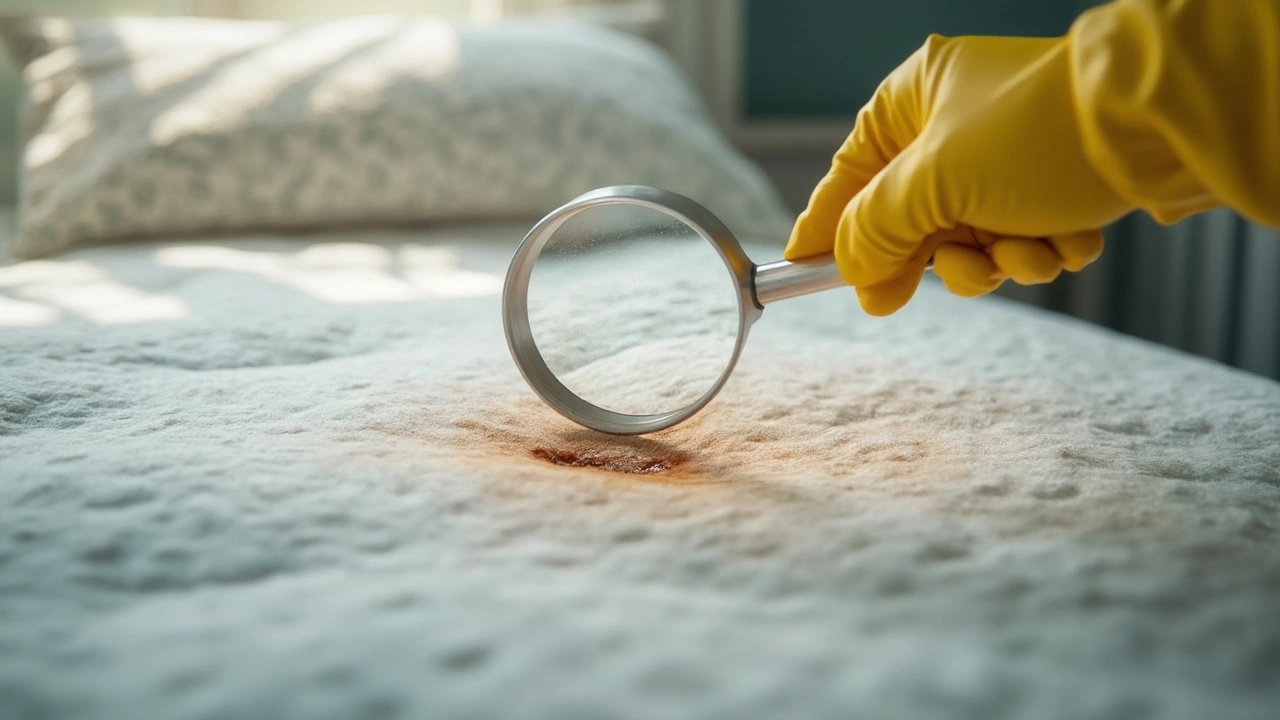Discharge Stain Removal: Simple Steps for Clean Fabrics
If you’ve ever spotted a wet spot on a sheet, carpet, or sofa, you know how annoying it can be. Discharge stains – whether from urine, vaginal fluid, or other bodily fluids – often leave a faint odor and a dark mark if you don’t treat them right away. The good news is you don’t need expensive equipment or chemicals. With a few everyday items and a bit of patience, you can get rid of the stain and the smell.
What Causes Discharge Stains?
Discharge is mostly water, proteins, and salts. When it dries, the proteins stick to fibers and the salts can attract dust. That’s why the spot can look darker and begin to smell. The longer it sits, the harder it gets to break down. Heat, sunlight, and humidity can also set the stain, making it tougher to remove.
Knowing the source helps you choose the right cleaner. Urine, for example, is acidic and contains ammonia, so an enzymatic cleaner works well. Vaginal discharge is less acidic, so a mild detergent and a bit of vinegar usually does the trick.
Step‑by‑Step Removal Guide
1. Act fast. Blot the wet area with a clean cloth or paper towel. Press, don’t rub – you want to soak up the liquid without pushing it deeper.
2. Rinse with cold water. If the fabric is washable, run cold water through the back of the stain. Hot water can set protein stains, so keep it cool.
3. Apply an enzymatic cleaner. Spray a small amount onto the spot and let it sit for 10‑15 minutes. Enzymes break down the proteins that cause odor.
4. Use a DIY solution. Mix one part white vinegar with two parts water and add a teaspoon of liquid dish soap. Test on an inconspicuous area first. Lightly dab the mixture onto the stain with a soft cloth.
5. Rinse again. Flush the area with cold water to remove any soap residue. If you’re cleaning a carpet, use a clean damp cloth to blot out excess liquid.
6. Dry completely. Air‑dry or use a fan. Moisture invites mold, which can bring back the smell.
For stubborn spots, repeat steps 3‑5 a second time. If the odor persists after two tries, it might be time to call a professional cleaning service. They have stronger enzymes and extraction tools that can reach deep into fibers.
Here are a few quick do’s and don’ts:
- Do use cold water for protein‑based stains.
- Don’t rub aggressively – you’ll spread the stain.
- Do test any cleaner on a hidden spot first.
- Don’t use bleach on colored fabrics; it can cause fading.
- Do consider a baking soda sprinkle after cleaning to absorb any lingering odor.
Whether you’re tackling a mattress, a couch, or a carpet, the same principles apply: act quickly, use the right cleaner, and rinse well. With these steps, discharge stains become a minor inconvenience rather than a permanent eyesore.

Sperm Stain or Discharge? Mattress Cleaning Tips to Tell the Difference
Figuring out if that mystery stain on your mattress is sperm or bodily discharge isn't as weird as it seems—there are real reasons you might need to know. This article explains how you can spot the difference based on color, smell, and texture, and what it means for your cleaning process. Get practical tips for dealing with each type of stain and find out why acting quickly always helps. We'll also clear up some common myths about cleaning up these messes. Whether it’s your mattress or a guestroom mishap, knowing what you’re dealing with makes the cleanup way easier.
Read More